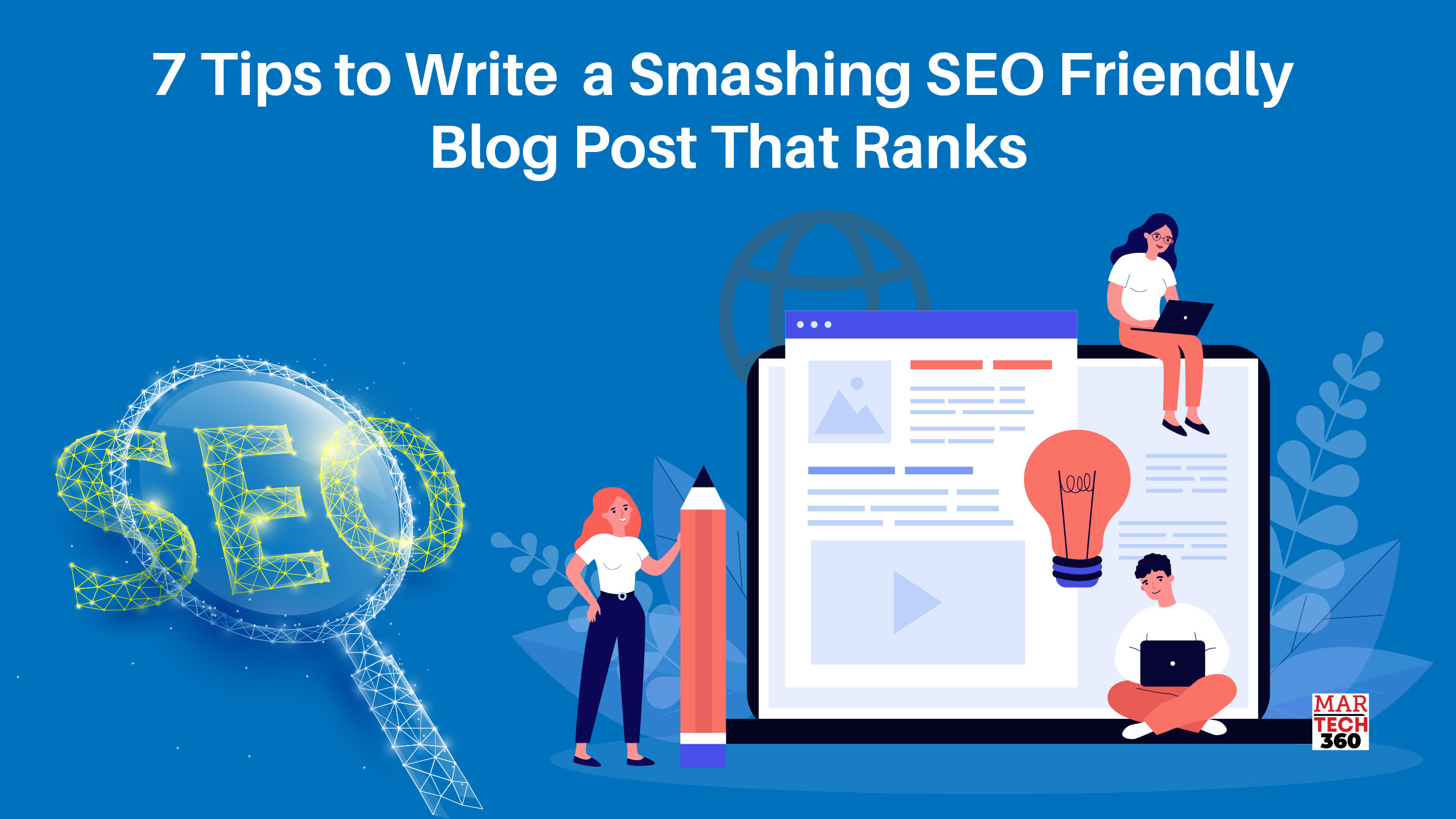5 Tips for Writing SEO-Friendly Blog Posts That Rank High
Choose Relevant Keywords
As a blogger, one of the most important things you can do to improve your website’s SEO is to choose relevant keywords. Keywords are the terms or phrases that people type into search engines to find information. By optimizing your blog posts with relevant keywords, you can increase your chances of ranking high in search engine results pages (SERPs).
Here are five tips for choosing relevant keywords for your blog posts:
- Start with a keyword research tool: There are many keyword research tools available online, and many of them are free. A popular tool is Google Keyword Planner. This tool will help you identify keywords that are relevant to your niche, as well as give you an idea of how competitive those keywords are.
- Think about user intent: When choosing keywords, it’s important to think about what users are looking for. For example, if you run a recipe blog, you might want to target keywords like “easy dinner recipes” or “healthy breakfast ideas.” These keywords are relevant to your niche and reflect what users are searching for.
- Use long-tail keywords: Long-tail keywords are longer, more specific phrases that people search for. While they may not have as much search volume as shorter keywords, they are often less competitive. For example, instead of targeting the keyword “recipes,” you might target the long-tail keyword “quick and easy chicken recipes.”
- Check out your competition: Take a look at what keywords your competition is targeting. This can give you ideas for keywords you might want to target as well. However, make sure to choose keywords that are relevant to your niche and not just because your competitors are using them.
- Use keywords naturally: Once you’ve identified your keywords, make sure to use them naturally in your blog posts. Don’t stuff your posts with keywords, as this can actually hurt your SEO. Instead, use your keywords in your post’s title, meta description, and throughout your content in a way that feels natural.
By following these tips, you can choose relevant keywords that will help improve your blog’s SEO and increase your chances of ranking high in search engine results pages. Remember, choosing the right keywords is just the first step. You also need to write high-quality, engaging content that will keep readers coming back for more.
Optimize Title and Meta Description
Once you have chosen relevant keywords, it’s time to optimize your blog post’s title and meta description. Your title and meta description are the first things that users see when your blog post appears in search engine results pages. Optimizing them can improve your click-through rate (CTR) and ultimately help you rank higher in search engine results.
Here are some tips for optimizing your blog post’s title and meta description:
| Tips | Examples |
|---|---|
| Include your target keyword | If your target keyword is “easy dinner recipes,” your title could be “10 Quick and Easy Dinner Recipes for Busy Weeknights” |
| Keep your title under 60 characters | Avoid having your title truncated in search engine results by keeping it under 60 characters. |
| Write a compelling title | Make sure your title is eye-catching and gives users a reason to click on your blog post. Use numbers, power words, and questions to make your title stand out. |
| Include your target keyword and a call-to-action | For your meta description, include your target keyword and a call-to-action. For example, “Looking for easy dinner recipes? Check out our top 10 quick and easy dinner recipes for busy weeknights.” |
| Keep your meta description under 155 characters | Similar to your title, keep your meta description under 155 characters to avoid truncation in search engine results. |
In addition to optimizing your title and meta description, make sure to use proper heading tags in your blog post. Heading tags (H1, H2, H3, etc.) help search engines understand the structure of your content. Your post’s title should use an H1 tag, and your subheadings should use H2 tags. Make sure to use your target keyword in at least one of your subheadings.
Remember, optimizing your title and meta description is just one piece of the puzzle when it comes to writing SEO-friendly blog posts. By choosing relevant keywords, writing engaging and high-quality content, using proper heading tags, and incorporating internal and external links, you can improve your blog’s SEO and increase your chances of ranking high
Write Engaging and High-Quality Content
Choosing relevant keywords and optimizing your title and meta description are important steps in writing SEO-friendly blog posts, but they are not enough. Your content must also be engaging and high-quality to keep readers on your website and to encourage them to share your content with others.
Here are some tips for writing engaging and high-quality content:
- Write for your audience: Knowing your audience is crucial when it comes to writing engaging content. What are their pain points? What questions do they have? What are their interests? Use this information to create content that speaks directly to your audience.
- Use a conversational tone: Writing in a conversational tone helps to make your content more engaging and relatable. It also makes it easier for readers to understand and follow along.
- Answer questions: People turn to search engines to find answers to their questions. By answering questions related to your niche, you can attract readers and establish yourself as an authority in your field.
- Use visuals: Adding visuals, such as images, videos, and infographics, can make your content more engaging and easier to understand. Visuals also help to break up long blocks of text and make your content more visually appealing.
- Make it scannable: Most readers skim content before deciding whether to read it in full. Make sure your content is scannable by using short paragraphs, subheadings, and bullet points to break up your content into easily digestible chunks.
- Edit and proofread: Nothing turns readers off faster than grammatical errors and typos. Take the time to edit and proofread your content to ensure that it is error-free and easy to read.
In addition to these tips, it’s important to remember that quality always trumps quantity. It’s better to write one high-quality blog post a week than to churn out five low-quality posts. Focus on creating content that provides value to your readers and that they will want to share with others.
By following these tips, you can create engaging and high-quality content that will improve your blog’s SEO and attract and retain readers.
Use Proper Heading Tags
Proper use of heading tags is crucial for both SEO and user experience. Heading tags help to break up your content into sections and provide structure to your blog post. They also help search engines understand the hierarchy of your content and the importance of each section.
Here are some tips for using proper heading tags in your blog post:
- Use only one H1 tag: Your blog post’s title should use an H1 tag. This tag tells search engines what your post is about and is the most important heading on your page. Make sure to use only one H1 tag per page.
- Use H2 tags for subheadings: After your H1 tag, use H2 tags for your subheadings. These tags tell search engines and readers that the content under them is related to the main topic of your blog post. Use H3 and H4 tags for further subheadings if needed.
- Use your target keyword in at least one subheading: Including your target keyword in at least one subheading can help improve your post’s relevancy for that keyword. However, make sure to use it naturally and not force it into a subheading where it doesn’t fit.
- Don’t skip heading tags: Skipping heading tags can confuse search engines and readers. Make sure to use them in order (H1, H2, H3, etc.) and don’t skip any tags.
- Use heading tags to improve readability: Proper use of heading tags can also improve the readability of your blog post. Breaking up your content into sections with clear subheadings makes it easier for readers to follow along and understand your message.
By using proper heading tags, you can improve the structure and readability of your blog post, as well as help search engines understand the hierarchy of your content. Remember to use your target keyword in at least one subheading and to use heading tags in order and without skipping any tags.
In addition to using proper heading tags, it’s important to incorporate internal and external links into your blog post. This will help to improve your blog’s authority and provide value to your readers. Keep reading to learn more about how to incorporate links into your blog post.
Incorporate Internal and External Links
Incorporating internal and external links into your blog post is an important part of SEO. Internal links are links that point to other pages on your website, while external links are links that point to other websites. By including both types of links in your blog post, you can help search engines understand the content on your website and improve your blog’s authority.
Here are some tips for incorporating internal and external links into your blog post:
- Use internal links to improve navigation: Internal links can help to improve your website’s navigation and make it easier for readers to find related content. Make sure to link to relevant pages on your website using descriptive anchor text.
- Link to high-authority external websites: Linking to high-authority external websites can help to improve your blog’s authority. Make sure to link to reputable websites that provide value to your readers.
- Use descriptive anchor text: Anchor text is the clickable text in a hyperlink. Make sure to use descriptive anchor text that accurately reflects the content on the page you are linking to. This helps search engines and readers understand what the linked page is about.
- Don’t overdo it: While internal and external links are important, it’s important not to overdo it. Too many links can be distracting and make your content harder to read. Make sure to only include links that are relevant and add value to your content.
By incorporating internal and external links into your blog post, you can improve your website’s navigation, enhance your blog’s authority, and provide value to your readers. Make sure to use descriptive anchor text and avoid overdoing it with too many links.
Once you have incorporated internal and external links into your blog post, it’s important to promote your post to increase its visibility. Keep reading to learn more about how to promote your blog post effectively.
Promote Your Blog Post
Promoting your blog post is just as important as writing it. Without promotion, your post may never reach its intended audience. Here are some tips for promoting your blog post effectively:
- Share on social media: Share your blog post on your social media channels, such as Facebook, Twitter, and LinkedIn. Make sure to use attention-grabbing headlines and images to encourage clicks and shares.
- Engage with your audience: Respond to comments and questions on your social media posts and blog post comments. This helps to build a community around your blog and encourages readers to share your content with others.
- Email your subscribers: If you have an email list, send your subscribers a link to your blog post. Make sure to personalize your email and let your subscribers know why they should read your post.
- Reach out to influencers: Identify influencers in your niche and reach out to them to ask if they would be interested in sharing your blog post. This can help to increase your post’s reach and attract new readers to your blog.
- Repurpose your content: Repurpose your blog post into other formats, such as a video, podcast, or infographic. This can help to reach new audiences and provide value to your existing readers.
- Use paid promotion: If you have a budget for promotion, consider using paid promotion on social media or search engines. This can help to increase your post’s visibility and attract new readers to your blog.
By promoting your blog post effectively, you can increase its visibility and attract new readers to your blog. Make sure to share your post on social media, engage with your audience, email your subscribers, reach out to influencers, repurpose your content, and use paid promotion if you have a budget.
In conclusion, writing SEO-friendly blog posts that rank high requires choosing relevant keywords, optimizing your title and meta description, writing engaging and high-quality content, using proper heading tags, incorporating internal and external links, and promoting your blog post. By following these tips, you can improve your blog’s SEO, attract and retain readers, and ultimately earn money through your blog.














 Over 10 years of experience in managing all size of tech projects.
Over 10 years of experience in managing all size of tech projects.